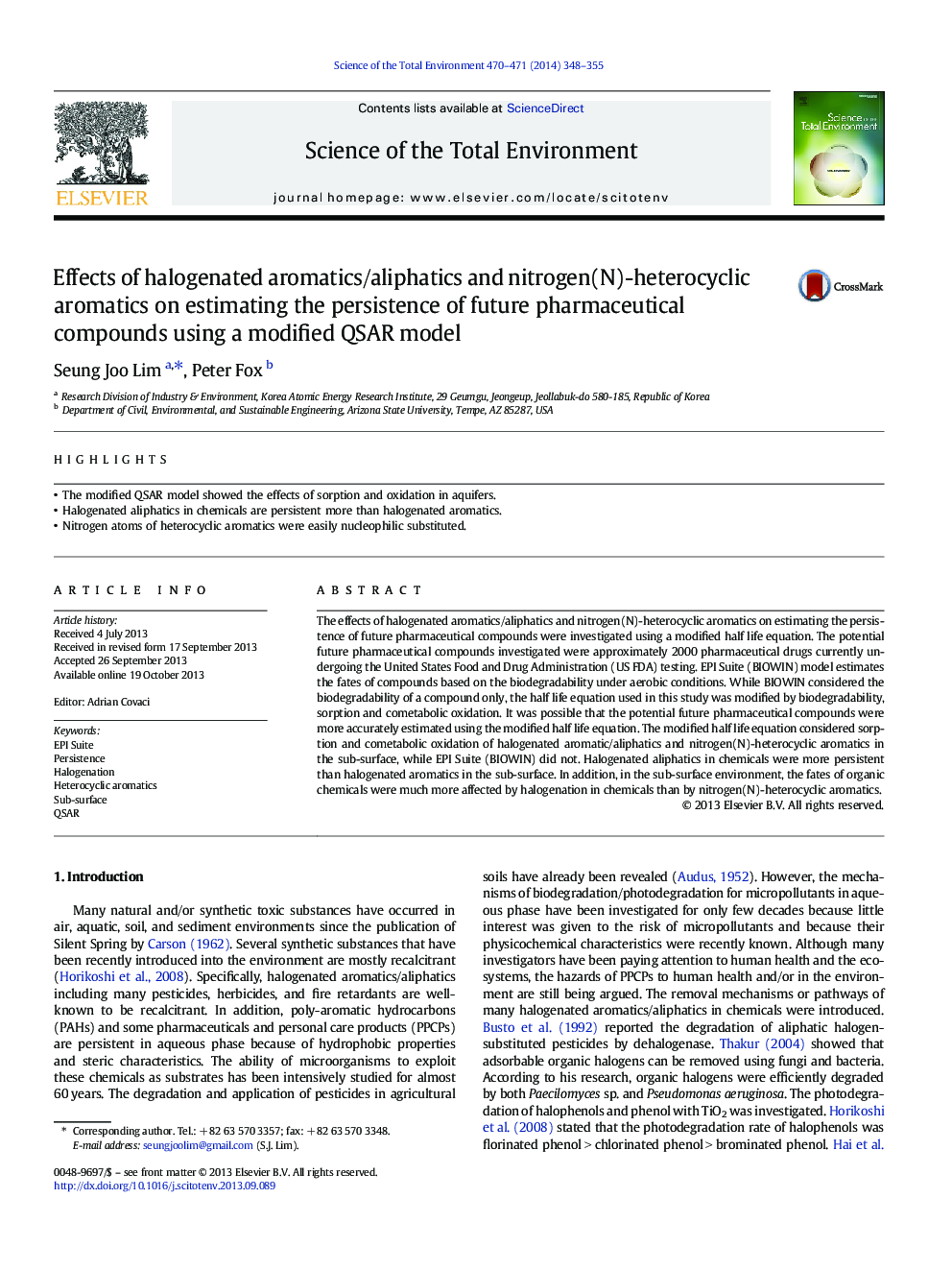| Article ID | Journal | Published Year | Pages | File Type |
|---|---|---|---|---|
| 6331374 | Science of The Total Environment | 2014 | 8 Pages |
â¢The modified QSAR model showed the effects of sorption and oxidation in aquifers.â¢Halogenated aliphatics in chemicals are persistent more than halogenated aromatics.â¢Nitrogen atoms of heterocyclic aromatics were easily nucleophilic substituted.
The effects of halogenated aromatics/aliphatics and nitrogen(N)-heterocyclic aromatics on estimating the persistence of future pharmaceutical compounds were investigated using a modified half life equation. The potential future pharmaceutical compounds investigated were approximately 2000 pharmaceutical drugs currently undergoing the United States Food and Drug Administration (US FDA) testing. EPI Suite (BIOWIN) model estimates the fates of compounds based on the biodegradability under aerobic conditions. While BIOWIN considered the biodegradability of a compound only, the half life equation used in this study was modified by biodegradability, sorption and cometabolic oxidation. It was possible that the potential future pharmaceutical compounds were more accurately estimated using the modified half life equation. The modified half life equation considered sorption and cometabolic oxidation of halogenated aromatic/aliphatics and nitrogen(N)-heterocyclic aromatics in the sub-surface, while EPI Suite (BIOWIN) did not. Halogenated aliphatics in chemicals were more persistent than halogenated aromatics in the sub-surface. In addition, in the sub-surface environment, the fates of organic chemicals were much more affected by halogenation in chemicals than by nitrogen(N)-heterocyclic aromatics.
